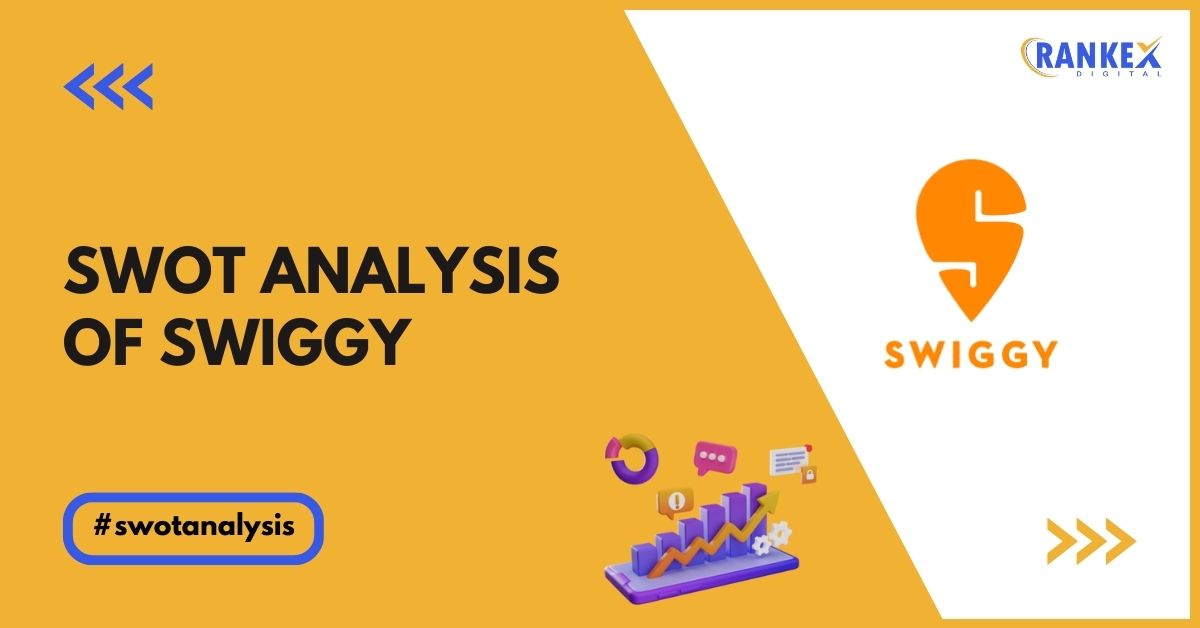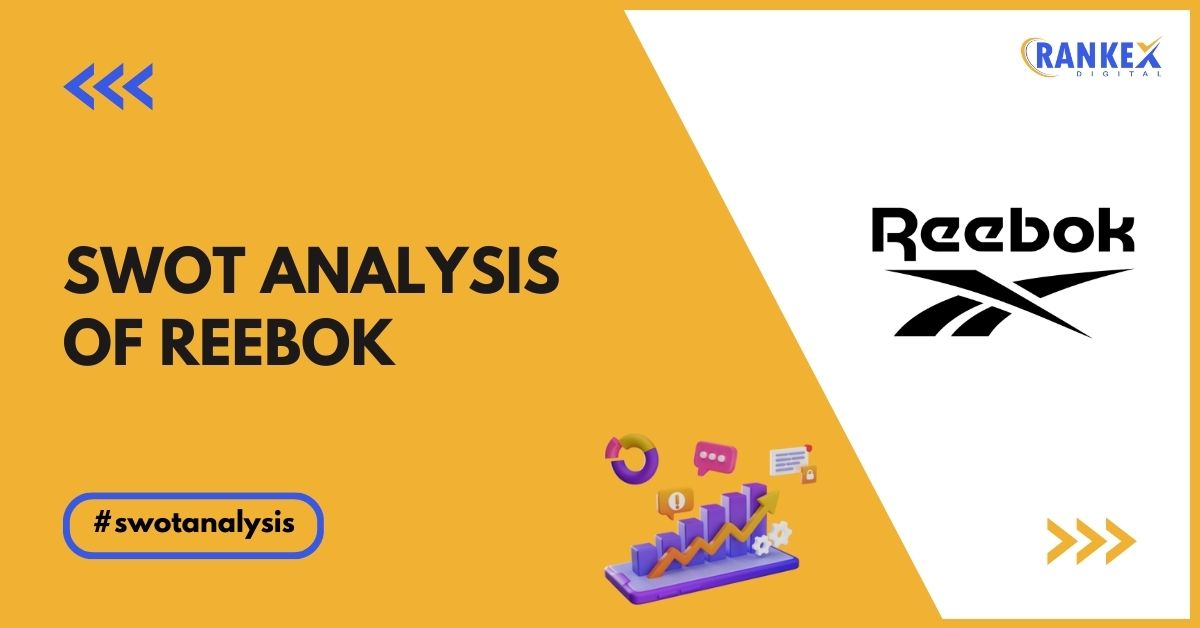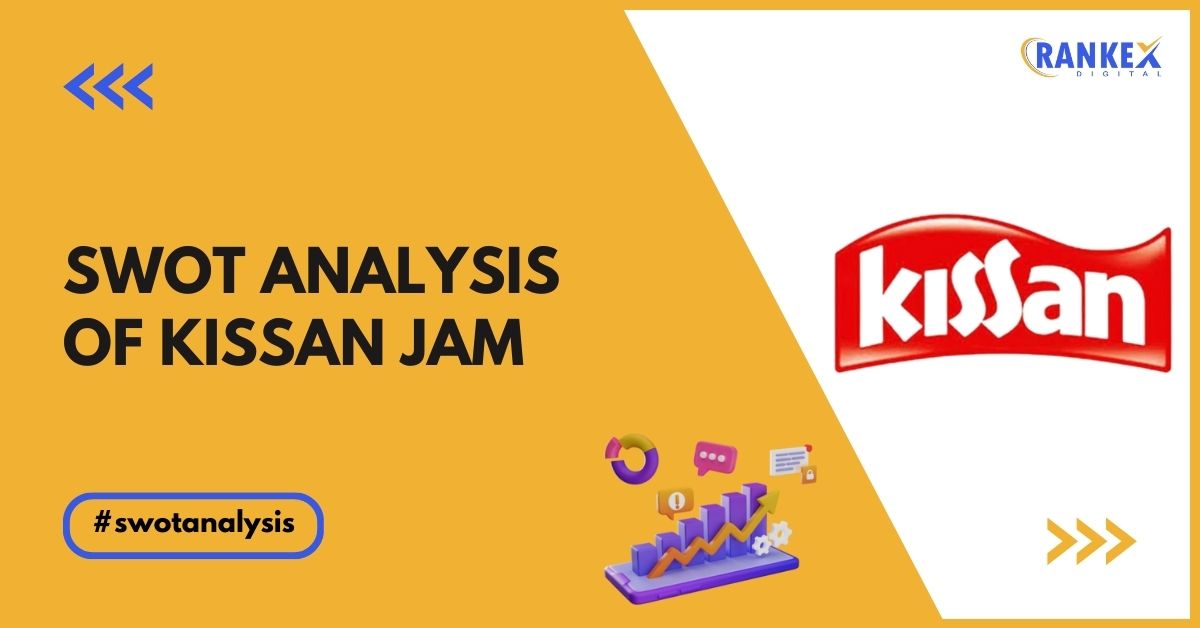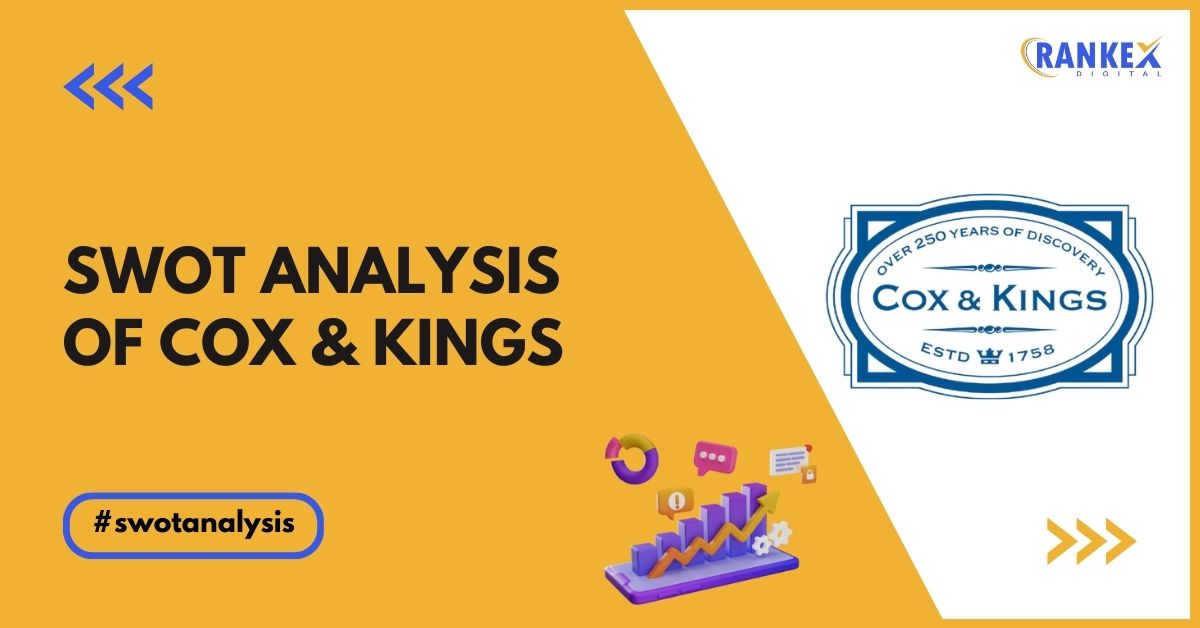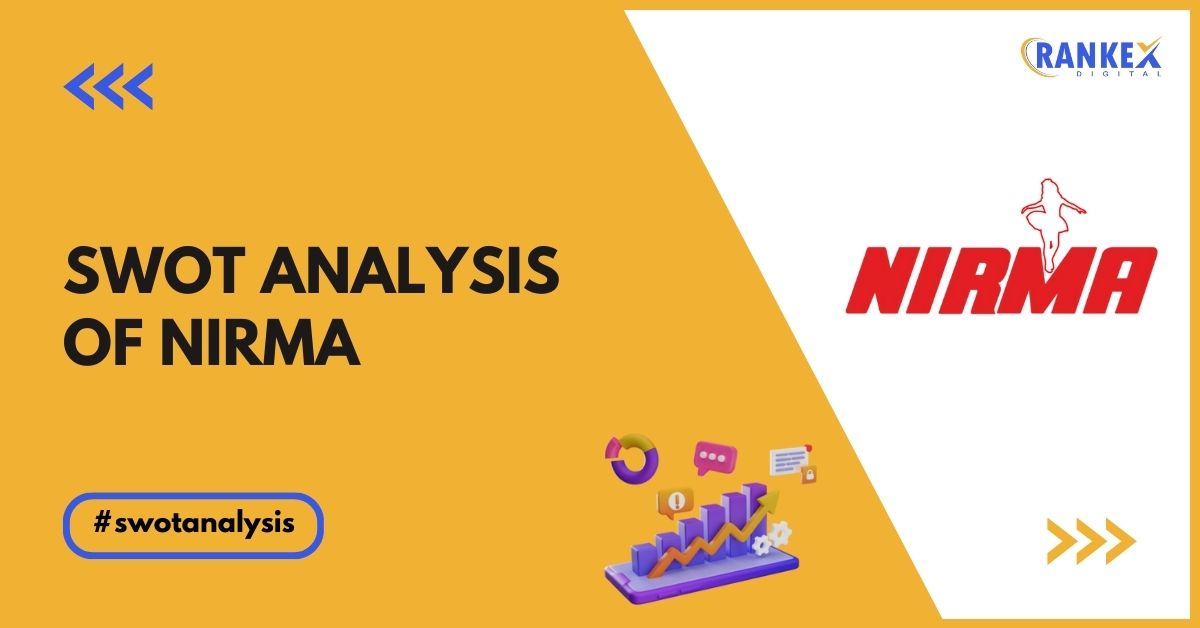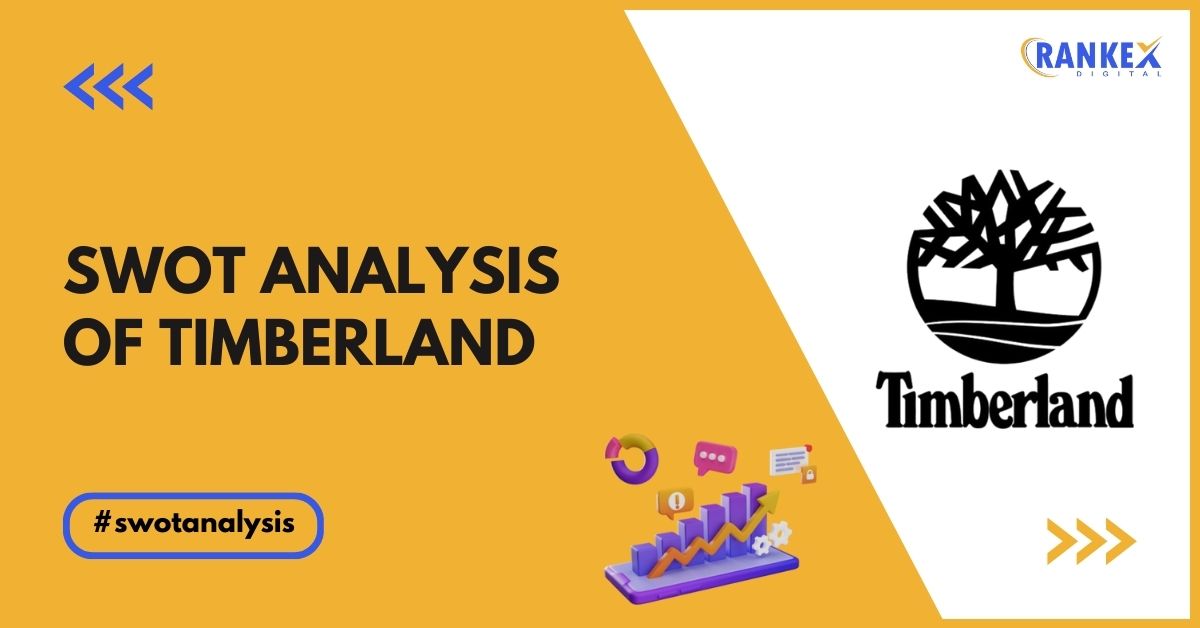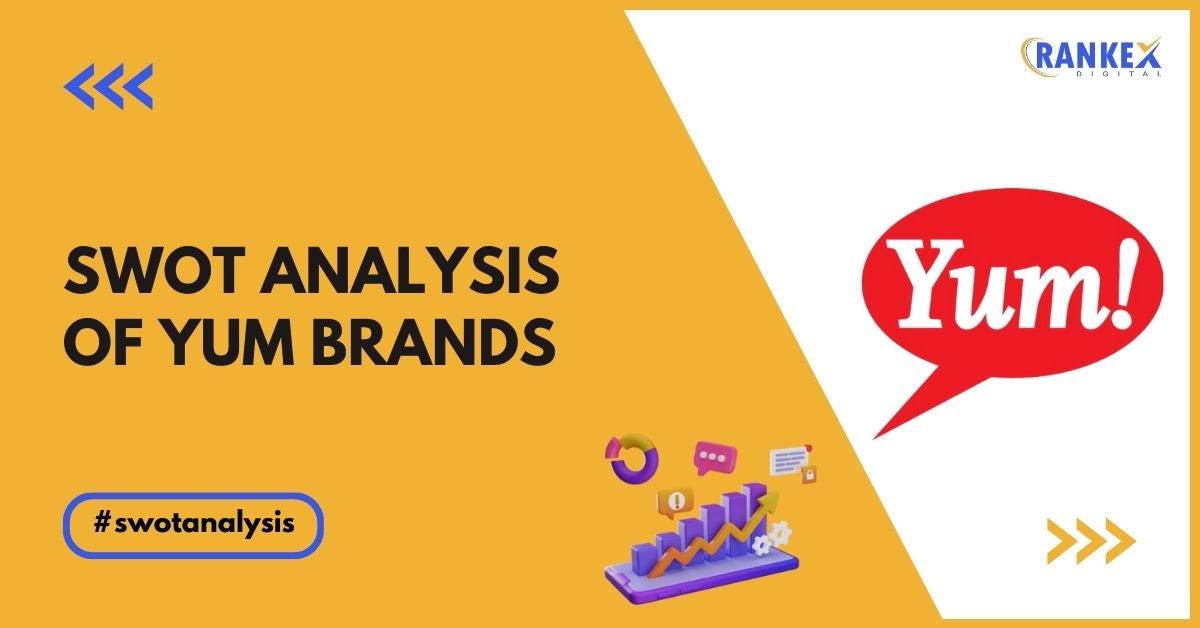Swiggy, one of India’s leading food delivery platforms, has significantly impacted the food tech industry since its inception in 2014. Known for its efficient delivery services and wide range of restaurant options, Swiggy has become a household name in urban India.
Conducting a SWOT analysis of Swiggy is essential to understand Swiggy’s current market position and future potential. This article delves into Swiggy’s strengths, weaknesses, opportunities, and threats, providing a comprehensive view of the company’s strategic landscape.
Table of Contents
What is SWOT Analysis?
SWOT analysis is a strategic planning tool used to identify and evaluate the strengths, weaknesses, opportunities, and threats related to a business. This framework helps businesses understand internal and external factors that can impact their success.
Definition and Components of SWOT Analysis
- Strengths: Internal attributes and resources that support a successful outcome.
- Weaknesses: Internal limitations and challenges that can hinder performance.
- Opportunities: External factors the company can exploit to its advantage.
- Threats: External factors that could cause trouble for the business.
Importance of SWOT Analysis in Strategic Planning
SWOT analysis is crucial in strategic planning as it helps businesses:
- Identify core competencies and areas for improvement.
- Develop strategies to capitalize on opportunities.
- Anticipate and prepare for potential threats.
- Make informed decisions to enhance competitiveness and sustainability.
Overview of Swiggy
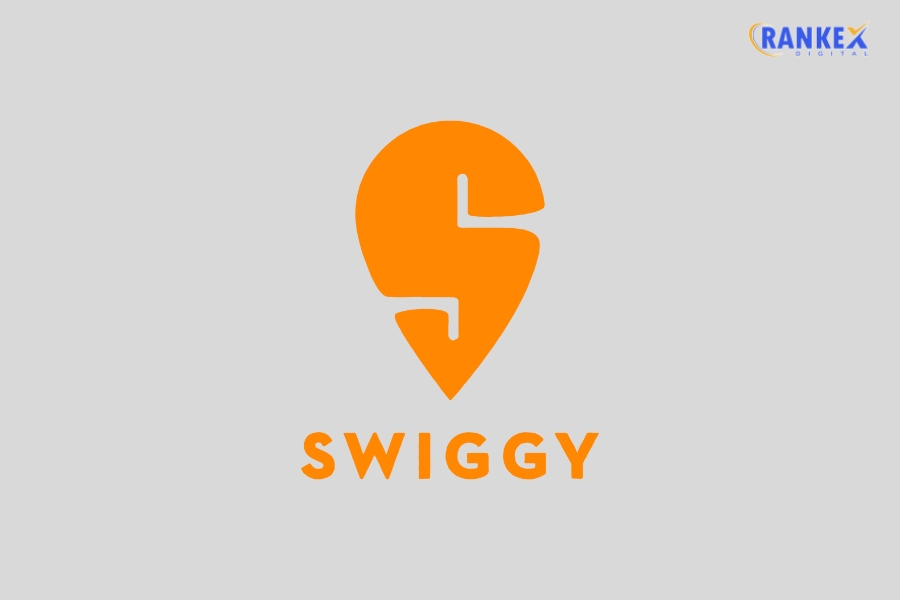
Swiggy, founded by Sriharsha Majety, Nandan Reddy, and Rahul Jaimini, started in 2014 as a food delivery platform in Bangalore, India. It has since expanded across India, providing a vast array of food choices and quick delivery services.
Swiggy’s services include Swiggy Genie for errands, Swiggy Instamart for groceries, and Swiggy Access for cloud kitchens, making it a versatile player in the market.
Quick Stats About Swiggy
| Founder | Sriharsha Majety, Nandan Reddy, and Rahul Jaimini |
| Year Founded | 2014 |
| Origin | Bangalore, Karnataka, India |
| No. of Employees | 10,000+ |
| Company Type | Private |
| Market Cap | $5.5 Billion |
| Annual Revenue | $550 Million |
| Net Profit | $ -400 Million |
SWOT Analysis of Swiggy
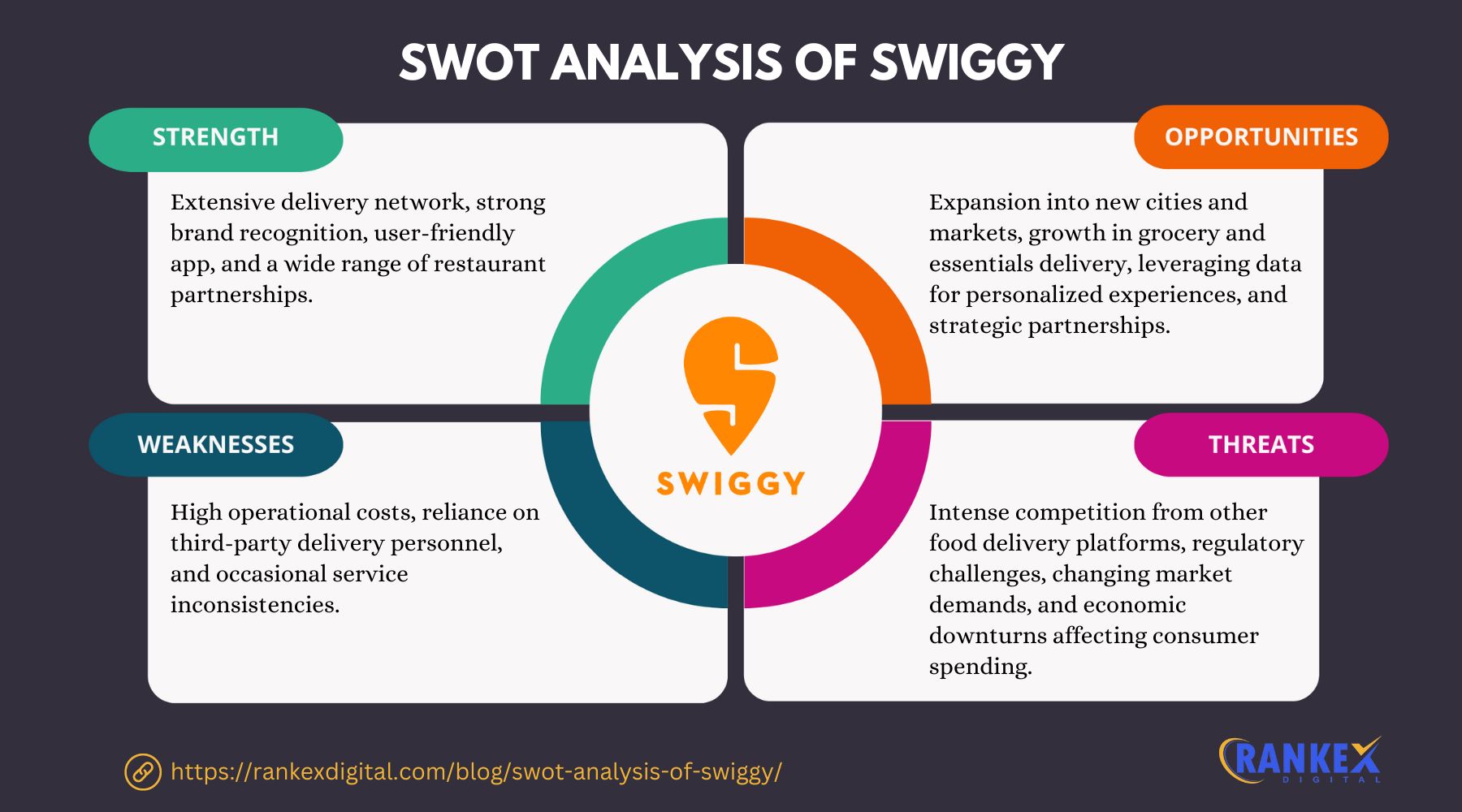
Strengths of Swiggy
- Strong Brand Recognition: Swiggy is a well-known brand in India, synonymous with reliable and quick food delivery services.
- Extensive Delivery Network: Swiggy has a wide and efficient delivery network, ensuring timely deliveries across major cities and towns in India.
- Diverse Service Offerings: Beyond food delivery, Swiggy offers services like Swiggy Genie, Swiggy Instamart, and Swiggy Access, catering to various customer needs.
- User-Friendly App: Swiggy’s mobile app is intuitive and user-friendly, making it easy for customers to browse, order, and track their deliveries.
- Strong Customer Loyalty: High customer satisfaction and loyalty contribute to repeat business and positive word-of-mouth marketing.
Weaknesses of Swiggy
- High Operational Costs: Running a large delivery network involves significant expenses, impacting overall profitability.
- Dependence on Urban Markets: Swiggy’s primary customer base is in urban areas, limiting its reach in rural markets.
- Quality Control Issues: Ensuring consistent quality across different restaurants and delivery partners can be challenging.
- Competitive Pricing Pressures: The competitive nature of the food delivery market forces Swiggy to offer discounts and promotions, affecting profit margins.
Opportunities for Swiggy
- Expansion into Rural Markets: There is potential for growth in rural areas where food delivery services are still nascent.
- Diversification of Services: Swiggy can further diversify its offerings, such as expanding grocery delivery or introducing meal kits and health-focused products.
- Technological Advancements: Leveraging AI and machine learning can enhance personalized user experiences, optimize delivery routes, and improve operational efficiency.
- Strategic Partnerships: Collaborating with local businesses, technology firms, and logistics companies can help Swiggy expand its market reach and enhance service offerings.
Threats to Swiggy
- Intense Competition: The food delivery market is highly competitive, with strong players like Zomato and Uber Eats posing significant threats.
- Regulatory Challenges: Compliance with food safety regulations, labor laws, and data privacy requirements can be complex and costly.
- Economic Fluctuations: Economic downturns can impact consumer spending on dining out and food delivery, affecting Swiggy’s revenue.
- Data Security Concerns: As a tech-driven company, Swiggy faces the risk of cyberattacks and data breaches, which can harm its reputation and lead to legal consequences.
Conclusion
The SWOT analysis of Swiggy reveals its strengths in brand recognition, extensive delivery network, diverse service offerings, and customer loyalty.
However, it also faces challenges such as high operational costs, dependence on urban markets, and competitive pricing pressures.
Opportunities for Swiggy lie in expanding to rural markets, further diversifying its services, and leveraging technological advancements. Threats include intense competition, regulatory challenges, economic fluctuations, and data security concerns.
By capitalizing on its strengths and opportunities and addressing its weaknesses and threats, Swiggy can continue to grow and maintain its leading position in the food delivery industry.
Frequently Asked Questions
1. What is Swiggy?
Swiggy is a leading food delivery platform in India that offers a wide range of food choices and quick delivery services. It also provides services like Swiggy Genie, Swiggy Instamart, and Swiggy Access.
2. When was Swiggy founded?
Swiggy was founded in 2014 by Sriharsha Majety, Nandan Reddy, and Rahul Jaimini.
3. What services does Swiggy offer?
Swiggy offers food delivery, grocery delivery through Swiggy Instamart, errands and courier services through Swiggy Genie, and cloud kitchen services through Swiggy Access.
4. How does Swiggy maintain its competitive edge?
Swiggy maintains its competitive edge through strong brand recognition, an extensive delivery network, diverse service offerings, and a user-friendly app.
5. What are the main challenges faced by Swiggy?
The main challenges faced by Swiggy include high operational costs, dependence on urban markets, quality control issues, and competitive pricing pressures.
6. How can Swiggy improve its profitability?
Swiggy can improve its profitability by optimizing operational efficiency, expanding into rural markets, diversifying its services, and leveraging technological advancements.
7. What opportunities can Swiggy explore for growth?
Swiggy can explore opportunities in expanding to rural markets, diversifying its service offerings, and adopting advanced technologies for personalized user experiences and operational efficiency.
8. What threats could impact Swiggy’s business?
Threats to Swiggy’s business include intense competition, regulatory challenges, economic fluctuations, and data security concerns.
9. How important is technological advancement for Swiggy?
Technological advancements are crucial for Swiggy as they can enhance personalized user experiences, optimize delivery routes, and improve operational efficiency.
10. What is the role of SWOT analysis in Swiggy’s strategic planning?
SWOT analysis helps Swiggy identify its strengths, weaknesses, opportunities, and threats, guiding strategic planning and decision-making to enhance competitiveness and sustainability.

